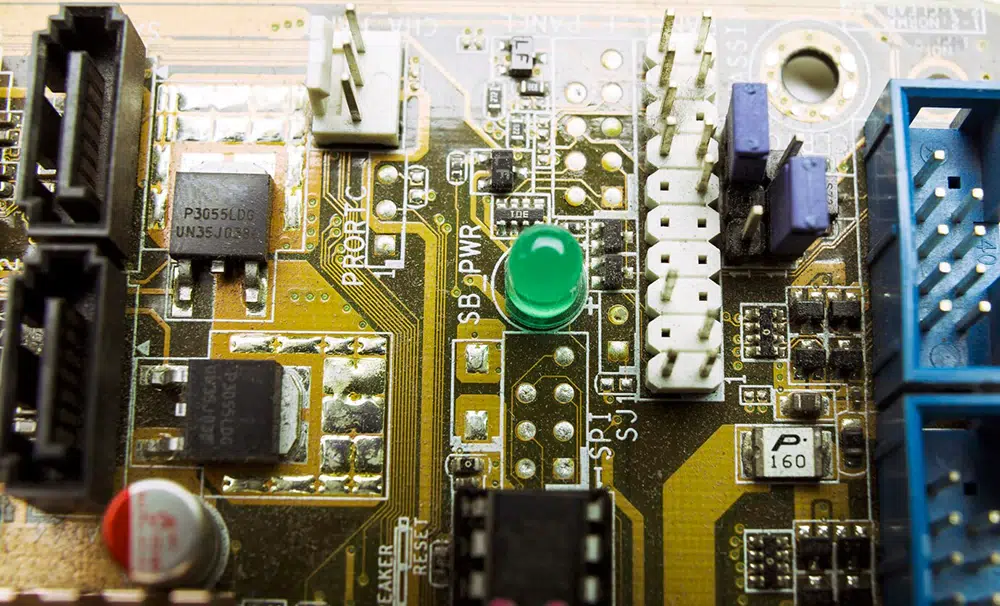Radio Frequency (RF) Printed Circuit Boards (PCBs) are specialized circuit boards designed to operate at high frequencies, typically ranging from 3 kHz to 300 GHz. With the proliferation of wireless technologies, RF PCBs have become integral in various applications, from telecommunications to medical devices. This article delves into what RF PCB is, its applications, design considerations, and more.
What is the RF PCB?
An RF PCB is a type of circuit board that is optimized for transmitting and receiving radio frequency signals. Unlike standard PCBs, RF PCBs are designed with specific materials and layouts to minimize signal loss and interference, ensuring efficient signal transmission.
What does RF mean in circuits?
RF stands for Radio Frequency. In the context of circuits, RF refers to electromagnetic waves within the frequency range of 3 kHz to 300 GHz. These frequencies are used for various forms of wireless communication, including radio, television, and cellular networks.
What are the applications of RF PCB?
RF PCBs are used in a wide array of applications, including:
– Telecommunications: Mobile phones, base stations, and satellite communication systems.
– Consumer Electronics: Wi-Fi routers, Bluetooth devices, and smart home gadgets.
– Medical Devices: MRI machines and wireless monitoring systems.
– Automotive: Radar systems and vehicle-to-everything (V2X) communication.
– Aerospace and Defense: Radar systems, communication devices, and electronic warfare systems.
What is the difference between RF PCB and digital PCB?
The primary differences between RF PCBs and digital PCBs include:
– Frequency Range: RF PCBs operate at much higher frequencies compared to digital PCBs.
– Material Selection: RF PCBs use specialized materials like low-loss substrates (e.g., Rogers, Teflon) to minimize signal loss, while digital PCBs typically use FR-4.
– Design Considerations: RF designs require careful consideration of impedance control, trace width, and signal integrity, while digital PCBs focus more on logic design and routing.
How to design a RF PCB?
Designing an RF PCB involves several critical steps:
1. Define Specifications: Determine the frequency range, power levels, and environmental conditions.
2. Select Materials: Choose appropriate substrates that offer low dielectric loss and stable electrical properties.
3. Impedance Matching: Ensure that traces are designed to match the characteristic impedance (usually 50 or 75 ohms).
4. Layout Considerations: Maintain short trace lengths, avoid sharp corners, and use ground planes to minimize interference.
5. Simulation: Use electromagnetic simulation tools to validate the design and optimize performance.
6. Prototyping and Testing: Fabricate prototypes and conduct testing to assess performance against specifications.
Which are RF PCB manufacturers?
TTM Technologies
https://www.ttm.com/en/solutions/rf-microwave
San Francisco Circuits
https://www.sfcircuits.com › Capabilities
NCAB Group
https://www.ncabgroup.com › rf-radio-frequency-pcb
Technotronix
https://www.technotronix.us › PCB Fabrication
Sierra Circuits
https://www.protoexpress.com › products
American Standard Circuits!
https://asc-i.com › products › rfmicrowave
Cirexx
https://www.cirexx.com/rf-microwave/
Sunstone Circuits
https://www.sunstone.com › pcb-manufacturing
Viasion
https://www.viasion.com › microwave-rf-pcb
What is the frequency of an RF PCB?
The frequency of an RF PCB can vary widely depending on its application, typically ranging from 3 kHz to 300 GHz. The specific design will dictate the operational frequency range, with different components optimized for different segments of this spectrum.
What material is RF PCB board?
RF PCBs are typically made from specialized materials that exhibit low dielectric loss, high thermal stability, and good dimensional stability. Common materials include:
– Rogers Material: Known for its excellent performance at high frequencies.
– PTFE (Teflon): Offers low dielectric loss and is used in high-frequency applications.
– FR-4: While not as effective as specialized RF materials, it can still be used in lower frequency RF applications.
What are basic checks for RF design in PCB?
When designing RF PCBs, several basic checks should be conducted:
– Impedance Matching: Verify that the impedance is consistent throughout the design.
– Trace Width and Spacing: Ensure proper trace dimensions to minimize signal loss and maintain impedance.
– Ground Plane Integrity: Check for continuous ground planes to reduce noise and improve signal integrity.
– Component Placement: Assess the positioning of components to minimize parasitic effects and interference.
– Thermal Management: Ensure adequate heat dissipation to prevent overheating of RF components.
Conclusion
RF PCBs play a crucial role in the functionality of modern electronic devices, enabling efficient wireless communication across various industries. Understanding their unique characteristics, design considerations, and applications is essential for engineers and manufacturers. As technology advances, the demand for high-performance RF PCBs will continue to grow, making expertise in this area increasingly important.











